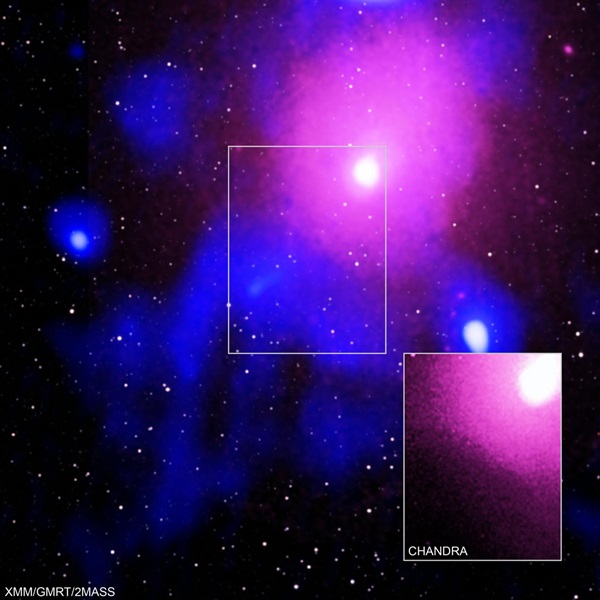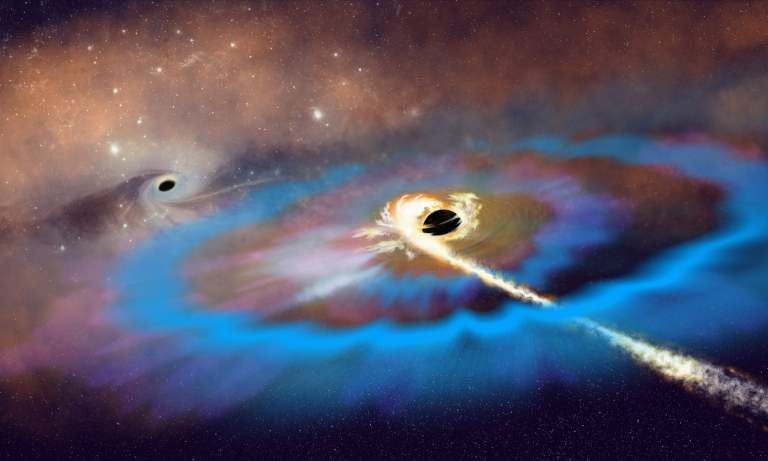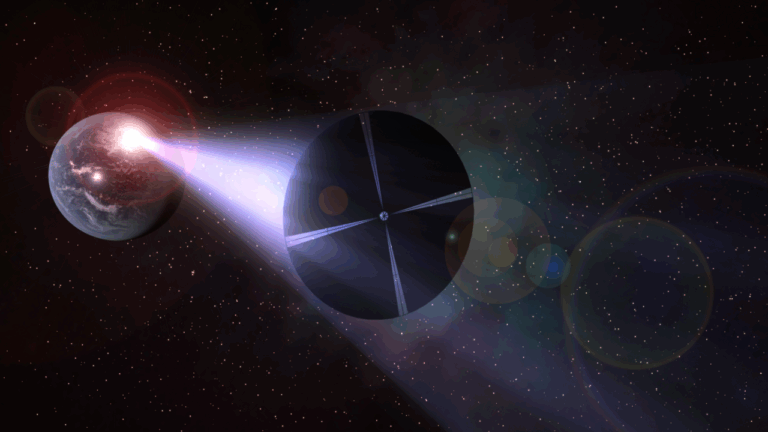Key Takeaways:
The Ophiuchus galaxy cluster is filled with hot gas, seen here in X-ray (pink) and radio emissions (blue). Within the brightest (white) spot is a galaxy hosting a supermassive black hole, which belched out the largest explosion ever seen. That explosion carved out a cavity whose boundary appears where the pink and blue edges meet.
The supermassive black hole sits at the center of a galaxy located in the Ophiuchus galaxy cluster. Its eruption was about five times greater than the last record-holder.
Black holes suck up matter that comes close to them, but they often expel matter as well. When matter falls toward the black hole, it’s sometimes redirected into beams or jets that blast into space and slam into surrounding material.
Suspicions of an explosion arose in 2016 when NASA’s Chandra X-ray Observatory reported evidence there was an unusual curved edge in the Ophiuchus cluster. Scientists thought such a structure could be carved out by the jets from the supermassive black hole, but only if there was a massive explosion of unprecedented magnitude. And the 2016 study couldn’t confirm whether that was the case.
But then followed the radio evidence: A new team of scientists looked at the cluster with radio telescopes and their data showed the same curved edge. Based on their observations, the edge is the boundary of a cavity in the hot gas filling the cluster, which could only have been cleared out by an intense blast from a supermassive black hole.
“The radio data fit inside the X-rays like a hand in a glove,” Maxim Markevitch, a co-author of the paper, said in a NASA press release. “This is the clincher that tells us an eruption of unprecedented size occurred here.”
Ultimately, the discovery used data from a number of instruments — including Chandra, the European Space Agency’s X-ray observatory, XMM-Newton, the Murchison Widefield Array in Australia, and the Giant Metrewave Radio Telescope in India.
The eruption is no longer going on, according to the researchers, as the radio data don’t show any evidence of current jets, which most likely ran out of fuel for growth. A paper with the findings was published February 27 in the Astrophysical Journal.

Want to learn more about the mysterious beasts known as black holes? Check out our free downloadable eBook: Exotic objects: Black holes pulsars, and more.










